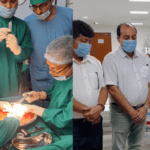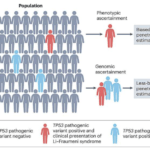The human gut is home to trillions of bacteria from thousands of species, working together to support digestion, fend off harmful microbes, and maintain overall health. However, these bacteria face constant threats from viruses called bacteriophages. To defend themselves, bacteria use a well-known system called CRISPR to recognize and destroy viral DNA.
A recent study by researchers at MIT sheds light on how bacteria in the gut microbiome adapt their CRISPR defenses. Surprisingly, they found that bacteria in the gut acquire new CRISPR sequences much more slowly than bacteria in lab settings.
What Is CRISPR?
CRISPR is like an immune memory system for bacteria. When bacteria encounter a virus, they can incorporate part of its DNA into their own. This DNA segment called a spacer, helps bacteria recognize and destroy the virus if it attacks again.
In lab environments, bacteria can add new spacers quickly—sometimes daily. However, in the human gut microbiome, bacteria update their CRISPR defenses at a much slower rate, averaging once every three years.
Why Is CRISPR Slower in the Gut?
The study, published in Cell Genomics, identifies several factors that slow down spacer acquisition in the gut:
- Lower Microbial Density:
The gut is diluted several times a day by meals, which flush out bacteria and viruses. This reduces the chances of bacteria and viruses interacting. - Spatial Distribution:
Some bacteria live in areas of the gut where they rarely encounter viruses, such as close to the mucus layer near the gut lining. - Horizontal Gene Transfer:
Instead of acquiring spacers directly, bacteria sometimes gain CRISPR sequences through horizontal gene transfer, where they exchange genetic material with neighboring bacteria.
Key Findings from the Study
The research team analyzed gut bacteria using two large datasets:
- One with 6,275 genomic sequences from 52 bacterial species.
- Another with 388 longitudinal metagenomes from four healthy individuals.
They discovered that spacer acquisition in the gut is much slower than expected, averaging 2.7 to 2.9 years per spacer. This is surprising given that the gut is exposed to viruses daily through food and other sources.
One species, Bifidobacteria longum, stood out for its faster CRISPR updates. It recently acquired multiple spacers targeting specific bacteriophages, likely due to horizontal gene transfer.
Why Does This Matter?
This study highlights the complexity of bacteria-virus interactions in the gut. Understanding how bacteria defend themselves can help scientists develop better microbiome-based therapies, such as:
- Personalized Microbiome Treatments:
By studying the viruses present in a patient’s gut, doctors could design therapeutic bacteria tailored to resist those viruses, improving the success rate of treatments like fecal microbiota transplants. - Building Strong Microbial Communities:
Learning how bacteria interact with viruses helps scientists identify what makes a healthy, resilient microbiome.
Conclusion
This groundbreaking research from MIT reveals that bacteria in the human gut microbiome update their CRISPR defenses much more slowly than in lab settings. Factors like lower microbial density, spatial distribution, and horizontal gene transfer play key roles.
For healthcare professionals, understanding these dynamics offers new opportunities to develop targeted microbiome therapies that enhance patient outcomes by building stronger, healthier microbial communities. To register for our next masterclass please click here https://linktr.ee/docpreneur




